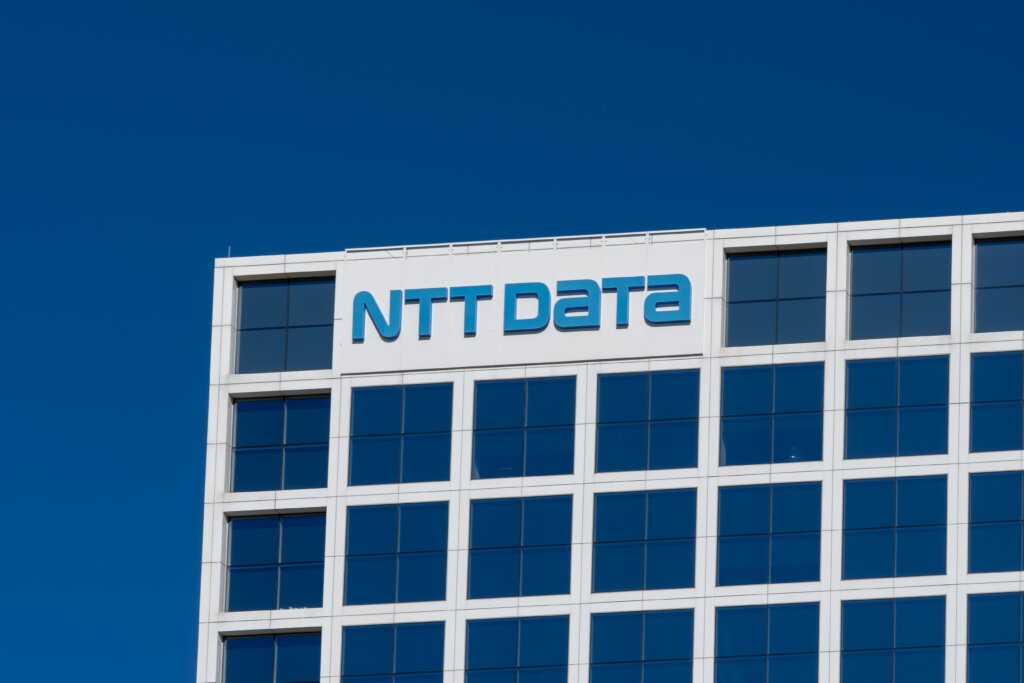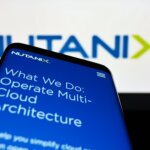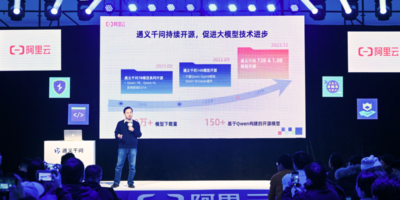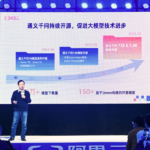
The future of cloud services in Southeast Asia. (Generated with AI).
Cloud competition and AI drive in Southeast Asia as US and China compete for dominance
- Southeast Asia’s cloud market is set for AI-driven growth.
- US-China cloud rivalry intensifies in Southeast Asia’s diverse market.
- Foreign investments propel Southeast Asia as a key cloud infrastructure hub.
Southeast Asia stands at the forefront of the global cloud computing sector, marked by intense digital competition. The region is characterized by its political diversity, ranging from democratic governments to authoritarian regimes. Economically, it spans a broad spectrum, with countries like Indonesia and Singapore representing contrasting ends.
The entrepreneurial spirit in sectors like fintech and e-commerce in the region has spurred significant demand for cloud services, attracting the attention of major cloud providers from the US and China. These companies are competing mainly on economic and commercial grounds. In this context, the cloud policies of Southeast Asian nations are shaped by their developmental needs and sovereignty concerns. The US, in its approach to the region, must effectively address these factors, as focusing solely on the security risks linked to China might not appeal to all countries – and in fact, might risk alienating otherwise friendly nations.
The cloud market dynamics
Southeast Asian nations find themselves balancing their historical connections with China against their relationships with the US. Some countries have a strong inclination towards China, while others, including Malaysia, Indonesia, and Vietnam, adopt a more cautious stance due to past tensions and territorial concerns.
This region also receives substantial investments from international cloud service providers and data center operators. Leading companies such as Japan’s NTT Group and Amazon are investing significantly in Thailand, Indonesia, and Malaysia. For instance, NTT Group is investing US$90 million in a new data center in Bangkok, and Amazon has pledged US$6 billion to Malaysia.
Southeast Asia is expected to become a central hub for data center expansion to support its rapidly growing internet economy, which is projected to reach US$330 billion by 2025. However, sustainable growth in this cost-sensitive market poses its challenges.
The Bangkok 3 Data Center by NTT, scheduled to open in 2024, exemplifies the region’s growth. It will boast state-of-the-art infrastructure to bolster cloud services and tackle power stability issues. NTT focuses on catering to the increasing demand from sectors with mission-critical operations, including banking and cloud services.
Traditionally, Singapore has led the market in data centers, but Thailand, Indonesia, and Malaysia are swiftly catching up. The pandemic accelerated this growth trend, increasing online data consumption and attracting Chinese and US cloud vendors to the region. Huawei, for instance, has quickly risen to prominence in Thailand’s cloud market.

The Bangkok 3 Data Center by NTT, scheduled to open in 2024. (Source – Shutterstock).
The escalation of cloud computing in Southeast Asia is driven by digital transformation, favorable government policies, and the necessity for modernizing IT infrastructure. The burgeoning digital tech startups in Singapore, Indonesia, Thailand, and the Philippines further escalate the demand for cloud services.
While US cloud companies currently dominate the market, they face growing competition from Chinese counterparts, highlighting the importance of US advocacy for reliable cloud infrastructure and services in this intricate region.
In the words of Sunny Chua, Singapore general manager at Wasabi Technologies, the cloud market in Southeast Asia is poised for change in 2024. This shift will see AI driving a boom in cloud storage, specialized providers offering more cost-effective solutions gaining traction against the dominance of major players, and data security continuing to be a crucial factor for cloud providers.
The SEA market is already increasingly establishing itself as one of the world’s major cloud spenders, with regional expenditure reaching US$2.18 billion in 2022 – up 25% from the previous year. Attention is expanding from well-established markets, such as Australia and Singapore, to digital newcomers of the region, like Malaysia, as the opportunities those markets present become clear.
As 2023 draws to a close, these developments mark a significant evolution in the market alongside catalysts for cloud adoption like AI, meaning businesses need to rethink their strategies to remain agile, data-secure, and prudent with their cloud spend.
How AI is fueling cloud storage
The data storage industry has burgeoned into a US$77.5 billion sector, and even amid the tech slowdowns witnessed this year, the demand for cloud storage remains unwavering. A report has revealed that 84% of enterprises anticipate a surge in the volume of data stored in the public cloud over the next 12 months. AI, by its nature requiring large data repositories to generate accurate insights, will inevitably add to that volume of data that needs to be generated and stored.

Sunny Chua, Singapore general manager, Wasabi Technologies,
That means businesses must rethink their storage solutions. No longer can price predictability be a good-to-have. The mobility of data will be key to ensuring companies are be able to extract value from the explosion of data they can expect to generate. It is hardly surprising that the cloud remains a critical gateway for AI to truly work for businesses. For example, many AI applications, including ChatGPT, are currently deployed in the cloud.
Quickly considering this new opportunity, major hyperscalers such as Amazon, Google, and Microsoft are offering AI platforms in the cloud. But the hidden costs of their cloud solutions remain. Businesses that want to adopt AI effectively and sustainably are increasingly looking for economical storage solutions from specialized vendors.
This trend is expected to continue, given the synergistic nature of the cloud and AI. Ultimately, when data is appropriately stored in the cloud, businesses gain the flexibility to tailor AI to their specific technological needs. Enterprises can dynamically adjust their cloud storage capacity based on demand, simplifying the customization and implementation of AI for various facets of the company.
The cloud serves as a repository for insights gleaned by AI, enhancing its utility for organizations that use this transformative technology. These make affordable, cost-predictable storage solutions the baseline for businesses in an AI-driven digital era.
Hyperscalers vs specialized providers
According to IDC, the Infrastructure as a Service (IaaS) market has seen a surge of 26.1% in market share – with the lion’s share of that growth held by hyperscalers. Certainly, the prevalence of hyperscalers in the cloud market can be attributed to the sheer amount and breadth of cloud services they offer.
It’s convenient for businesses to use hyperscalers for a bundle of cloud services as an all-in-one option for data management and storage – ultimately translating to covering the entire cloud needs of businesses. But global hyperscalers do not typically offer services customized to specific geographic regions’ requirements and unique use cases – expecting local customers to adopt a “one size fits all” approach to cloud computing.
The extensive array of services provided by hyperscalers can be challenging for users to navigate and fully grasp, particularly for those with specific and limited needs – a scenario often observed in small and medium-sized enterprises (SME). Yet, tools offered by hyperscalers can often be cost-prohibitive.
The cumulative expense of utilizing all development and testing tools from a hyperscaler may surpass the budget constraints of developers operating on a tight budget. Last year, the APAC region demonstrated a higher susceptibility to overspending on cloud services, with 51% of organizations exceeding their cloud storage budgets.
The truth is that in choosing one exclusive provider for all the businesses’ cloud needs, organizations risk losing out on cost predictability. Hyperscalers, driven by revenue maximization, typically function within a walled garden, making interoperability between cloud services possible but cost-prohibitive. This approach, though, confines customers, limiting their access to diversity to create a resilient multicloud environment.
2024 will see specialized providers offering more cost-effective storage solutions gradually gaining ground, challenging the dominance of hyperscalers – especially as SEA anticipates generating massive volumes of data in its pursuit of a US$1 trillion digital economy. The demand then arises for specialty cloud storage providers capable of delivering predictable, secure, and scalable storage, coupled with seamless and rapid access to data. The solution here is clear: don’t leave all your eggs in one basket. Collaborating with multiple partners in the cloud is crucial to ensure organizations can engage with the appropriate vendor for “best-of-breed” product offerings tailored to their needs.
Data security: the cornerstone of AI in cloud services
It is no surprise that businesses entrusting their data to a public cloud provider consistently harbor concerns regarding data security. While cloud and AI have distinct growth paths, their development is inextricably intertwined and gradually merging into a single entity. As businesses aim to harness AI for more seamless operations, cybercriminals increasingly deploy advanced technologies, including AI-driven methods, making the threats more intricate and challenging to identify. Ransomware remains a substantial threat, both within Singapore and globally, as cybersecurity vendors observe a 13 percent surge in ransomware incidents worldwide in 2022. Businesses are now generating even larger volumes of data, making them sitting ducks for attacks. With that, cybersecurity threats will persist and become increasingly complex in 2024.
Businesses must then confront the reality that preventing all potential methods of malicious actors infiltrating networks, exploiting unknown vulnerabilities, and targeting company data and backups for extortion is nearly impossible. That said, many businesses deploy security strategies encompassing prevention and detection, data protection, backup, and recovery to maximize their efforts to safeguard data from malicious entities effectively.

Data security should be top of mind when moving to the cloud. (Source – X)
After implementing AI or any next-generation technology, securing and maintaining the integrity of the utilized information is crucial. Tampered data poses the risk of companies working with incorrect information, leading to serious consequences and subsequent efforts to rectify mistakes, causing productivity loss. Given the evolving nature of technology, businesses must tread cautiously with it – regularly checking for breaches or threats in the burgeoning realm of AI to mitigate the growing risk of cyberattacks.
Immutable backups are also a crucial tool in businesses’ security arsenal, serving as the last line of defense in data protection – ensuring the backup copy remains secure and immune to breaches or tampering. In this scenario, the cloud holds a distinct advantage over on-premises data storage, as it operates independently of user accounts, a common target for hacks. Crucially, even if malicious actors compromise a system, an immutable copy of AI data in the cloud is impervious to attacks, deletion, or compromise.
Essentially, the SEA market’s robust growth in cloud spending, driven by digital newcomers and catalyzed by AI, signifies a pivotal shift in strategies for businesses. In navigating today’s digital landscape, businesses must tread cautiously – keeping overreliance in check, regularly fortifying their defenses, and viewing the hurdles that potentially lie ahead for them to flourish.
READ MORE
- 3 Steps to Successfully Automate Copilot for Microsoft 365 Implementation
- Trustworthy AI – the Promise of Enterprise-Friendly Generative Machine Learning with Dell and NVIDIA
- Strategies for Democratizing GenAI
- The criticality of endpoint management in cybersecurity and operations
- Ethical AI: The renewed importance of safeguarding data and customer privacy in Generative AI applications




